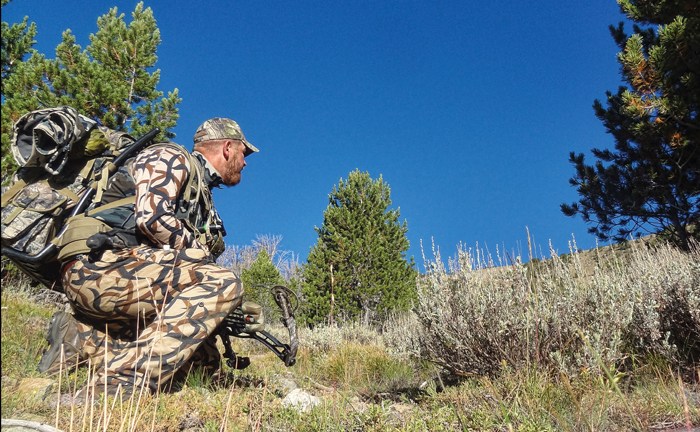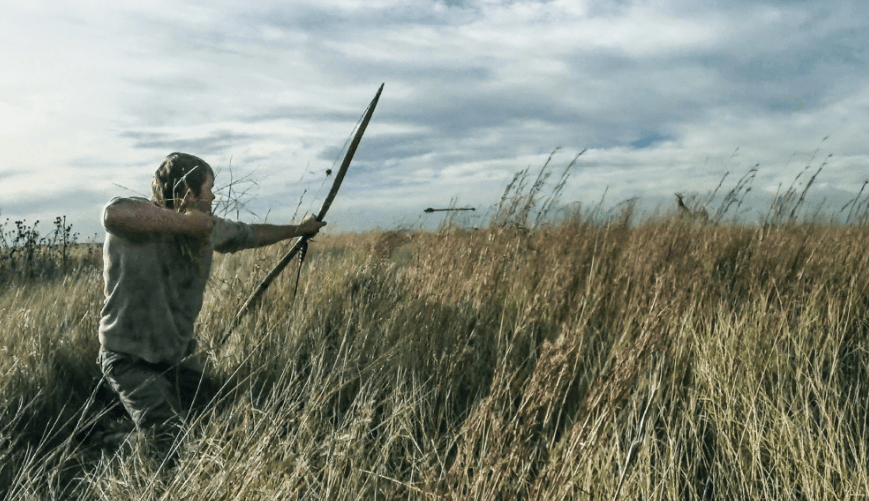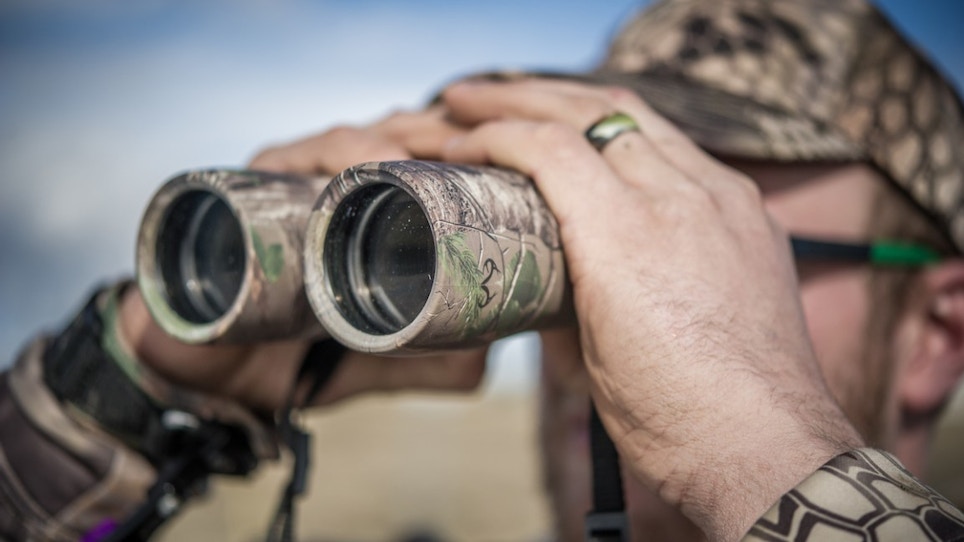Spot-and-stalk hunting is one reason you’ll notice many western hunters are dedicated to fitness. Stamina is critical when covering ground is required. And no one who is sucking wind is able to maintain any degree of stealth and grace on approach.
It's this physical challenge coupled with the lure of the wide open that often attracts hunters to the pursuit of western game animals.
The information below covers spot-and-stalk hunting tips for someone who has literally never had a chance to hunt this way. But it also progresses, covering techniques and questions for those experienced hunters looking to fine-tune their process and approach.
Why do some hunters choose to spot-and-stalk their prey?
The goal of spot-and-stalk hunting is to see the animal before it sees you, and craft an approach plan for a good shot opportunity. This technique is used most often in western prairie and mountainous regions for bowhunting elk, pronghorns and mule deer. — Explore Bowhunting, a bowhunting curriculum developed by the ATA.
I’m new to spot-and-stalk hunting and have no idea where to start. What are some basic tips for beginners?
- Elevation. Find an elevated vantage point, such as trees, rocks or hilly terrain. Check the area thoroughly. If you see nothing, move to another vantage point and check the next area.
- Fresh Tracks. Look for fresh tracks and sign, moving slowly, walking a few steps at a time, and stopping often to scan and study the surroundings. Always be ready because a shot might suddenly present itself.
- Wind Direction. Know your wind direction to avoid an animal catching your scent as you approach. Stay downwind of the animal (the wind is in your face) to avoid being detected.
- Walk quietly through the terrain. Avoid stepping on sticks and other debris that could make noise and alert animals to your presence. Wet or damp conditions create better stalking conditions because the terrain becomes quieter when leaves, pine cones and other woodland debris are wet, soggy and less brittle.
- Clothing. Dress comfortably in soft, quiet, scent-free clothing so you can move freely with ease and stealth
- Tune into your senses. Listen to all the sounds around you. they might reveal an animal’s location. Animal sounds can indicate other animals and birds are aware of you, such as squirrels chattering, crows cawing, elk barking or deer snorting.
- Vision. Look around to detect shapes, colors and movements that identify prey. Peripheral vision — seeing what is off to your sides when looking ahead — is vital because animals often move at the edge of a hunter’s sight.
- Dress lightly and strategically. Don’t dress too heavily or you’ll make some noise and have larger movements. You’ll also sweat, which could make it easier for animals to smell you. Quality boots are a must and a hat with a bill helps shield your face from the sun’s glare.
- Stay calm and collected. Bowhunters who spot animals they’re pursuing, but don’t immediately get a shot, must continue to use the same tactics to spot the animal again. If your breathing quickens and your heart starts racing, stop and regain your composure before resuming the stalk. — Explore Bowhunting, a bowhunting curriculum developed by the ATA.

Learn what to do by putting yourself in situations. Experience is the best teacher there is, and instinctively reading animals comes from experience. Photo: Zach Bowhay
How much gear should you carry on a spot-and-stalk hunt?
Jared Scheffler of Whitetail Adrenaline stalks whitetail deer and, in most circles, he’s considered one of the best. Here’s his gear recommendations for spot-and-stalk hunting:
To remain truly mobile, Scheffler recommends carrying only the essentials. “I hear it all the time: public-land hunters complaining about how much gear they must carry through the woods,” he said. “Plus, you sometimes haul all that gear only to find that someone else is already hunting where you intended to. The beauty of ground hunting is that you don’t need treestands and heavy bundles of climbing sticks.
All you really need is:
- Your bow
- Binoculars
- Calls and/or rattling antlers (optional).
This modest setup allows Sheffler to adapt and move quickly when situations call for it.
Read more about gear and other spot-and-stalk techniques from Jared Sheffler here.
How is it possible to get close enough to your target, like archery-close?
According to Sheffler, it’s important to note that there isn’t a one-size-fits-all approach to getting close. For whitetails, “calling works well if a buck is across the fence on private ground,” he says. “However, if we’ve run out of cover while stalking a buck that’s on public land, we often just lay quietly and either wait until he comes to us or moves into a more suitable position for a stalk.
For elk, hardcore elk hunter Fred Waymire recommends getting a buddy stay back and call just enough to keep a bull bugling while the other guy moves in. However, Waymire, like many elk hunters, often hunts alone. During his solo hunts, Waymire likes to shadow the herd as they move toward their breeding grounds. By moving along with the herd at a safe distance, Waymire can play the wind and often observe elk activity. Because he’s always within striking distance, he waits for an opportunity like a bull raking a tree, splashing in a wallow or chasing a young challenger away from the cows.
On the other hand, Jason Matzinger, host/producer of “Into High Country TV”, Montana, doesn’t call at all. He focuses his efforts in areas known to hold elk, hunting during prime morning and evening hours when the elk are talking back and forth on their own.
“I have killed mostly all of my bulls by ambushing them while moving in totally silent,” said Matzinger. “By hunting during prime time – morning and evening – I can close the gap and slip in while the herd is totally at ease. Calling your way in will only keep the entire herd looking in your direction, making it much harder to move in undetected.”
To get more ideas and tips for getting close when stalking elk, go here.
To get more ideas and tips for getting close when stalking whitetails, go here.
So you close in, near enough for a good shot, but what are tips for closing the deal once within shooting range?
“Probably the biggest factor in closing the deal is reading the animal,” Scheffler said. “Developing that skill will help you know when to move, when to draw your bow and when to shoot. There are times when an animal moves behind a rise, and we’ll run to close the gap as quickly as possible. In that case, being too careful would prevent us from closing the distance.”
If, however, a hunter moves when the animal is looking in his or her direction, it’ll bust nearly every time before there’s even a chance of drawing a bow. Learn what to do by putting yourself in situations. Experience is the best teacher there is, and instinctively reading animals comes from experience.

When hunting from the ground, most shot opportunities are at alert deer. Learning when to draw and shoot is a game of reading the animal’s behavior. Photo: Whitetail Adrenaline
For animals that are hard to spot, what movement are hunters looking for when they glass open terrain, and do they rely on a certain method as they scan the landscape?
Bowhunting World editor Jace Bauserman always scans the area first, without binos, before he does anything else. He works right to left, then left to right.
“ I like to pick three or for landmarks in the grid,” says Bauserman. “These landmarks keep me from drifting out of the grid and moving on to new terrain too quickly. Now, get your eyes behind your glass and move slowly and methodically over the area. Stay focused! You’re looking for the twitch of an ear, the shimmer of horn tip and the slightest hint of colored hair. If your first gird search turns up nothing, pull your eyes from the scope and visually plan out the next grid.”
You can read more from Bauserman about better glassing technique here.
Featured Photo: Nick Trehearne Photography






